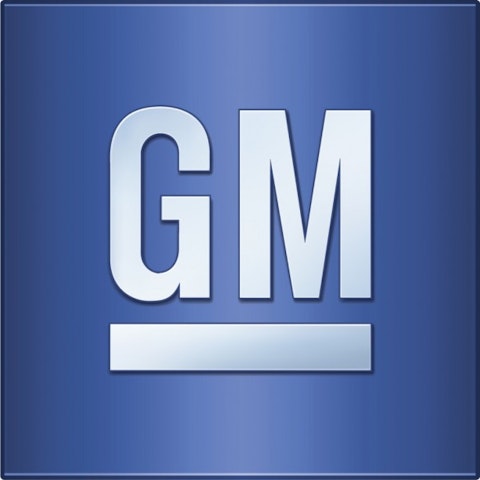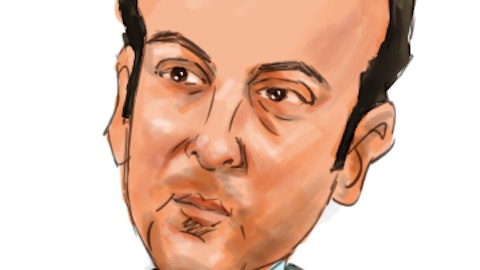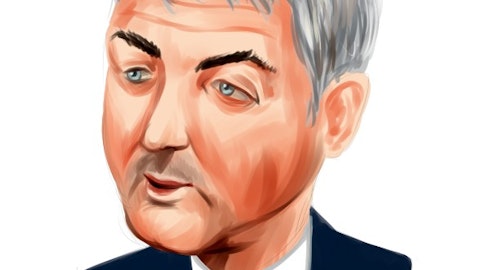General Motors Company (GM) is the most popular automobile stock among hedge funds tracked by us. At the end of last year, there were 80 hedge funds reported to own GM in their 13F portfolios. David Einhorn was the most bullish hedge fund manager about GM. His Greenlight Capital had $385 million invested in GM at the end of 2011. Larry Robbins, Bill Miller, and Jim Simons were also bullish about this stock.

However, is GM really worth investing in? Let’s check out by taking a closer look at this company.
Automobile stocks are highly cyclical. When the economy grows, the demand for automobiles is also robust. On the other hand, the demand shrinks during recessions. Even though consumer confidence has been increasing over the past few months, it is still below its historical average. That’s one of the reasons why most auto stocks are currently trading at low multiples. The average 12-month trailing P/E ratio for the auto manufacturers is below 10. But GM’s P/E ratio is even lower than the industry average. Its 12-month trailing P/E ratio is only 6.35. GM is expected to earn $3.87 in 2012 and $4.65 in 2013. Over the long term, its earnings are expected to grow at over 12% per year.
Analysts are bullish about the stock. However, the projected earnings may not truly reflect the actual earnings shareholders can get. GM entered bankruptcy protection in June 2009. Although it achieved an improved balance sheet by getting rid of a large amount of its debt obligations, it is still faced with claims on its cash for certain obligations such as underfunded pension liabilities. According to the most recent 10K filing of the company, GM’s defined benefit pension plans are currently underfunded. As of December 31, 2011, the company’s combined US and non-US pension funds were underfunded by about $25.4 billion, up from $22.2 billion for the end of 2010. The other post-employment benefits (OPEB) plans were also underfunded by $7.3 billion at the end of last year. The large underfunded pension plans somewhat explain the low P/E ratios of GM. The true earnings will be much lower if the underfunded pensions are taken into consideration.
In addition, because of the bankruptcy protection, about a third of the company is owned by US Treasury. In 2009, the old GM received total proceeds of $53.1 billion, both from UST under UST Loan Agreement and from UST and EDC under its DIP Facility. After entering into the UST Credit Agreement, the current successor company assumed debt of $7.1 billion which old GM incurred under DIP Facility. The current GM has repaid in full the $7.1 billion debt, but the company is still required to comply with all the covenants in the UST Credit Agreement unless GM ceases to be a recipient of Exceptional Financial Assistance or UST ceases to own any equity interests in GM. Certain covenants will remain in effect until the end of 2014 unless the UST receives total proceeds. Therefore, GM has been paying back UST through debt repayments, dividends, interest, preferred stock redemptions and common stock sales. As of December 31, 2011, the UST has received cumulative proceeds of $23.1 billion. The remaining balance is about $26.4 billion. This means that GM will continue to pay back UST, rather than paying out dividends to other shareholders.
The major competitor of GM is Ford Motor Co (F). Unlike GM and many other auto companies, F did not ask for government financial aids. On the contrary, the company gained market share as its competitors filed for bankruptcy protection in 2009 and 2010. It also benefited from the Japan crisis as the earthquake in March 2011 restricted the production of Ford’s competitors in Japan, such as Toyota Motor Corp (TM). Ford is planning to discontinue its Mercury brand vehicles, which may to some extent drag its earnings growth in the near future. As a result, F is currently trading at low multiples. Its 12-month trailing P/E ratio is only 6.32. But the termination of Mercury brand will help the company to revive its Lincoln brand vehicles. F was also very popular among hedge funds. As of December 31, 2011, there were 42 hedge funds with F positions. Ken Heebner’s Capital Growth Management had $123 million invested in F at the end of last year. Bill Miller’s Legg Mason Capital Management also had nearly $100 million invested in F.
Why are hedge funds more bullish about GM than F? Well, GM is actually benefiting from its bankruptcy. It has a leaner cost structure and improved balance sheet. It also focuses on fewer brands in North America, which helps the company to improve its products and marketing. The largest hedge fund holder of GM, David Einhorn, discussed General Motors in his third-quarter letter. According to Einhorn, GM has over $33 billion of cash on its balance sheet and its pension liabilities aren’t likely to over-run the company. Einhorn argued that auto sales didn’t peak in 2011 and it will be around 15 million in 2012.
Overall we agree with hedge funds. GM and F have similar current P/E ratios, while GM’s earnings are expected to grow at higher rates (12% versus 8% for F). We think government’s stake in GM is a positive for potential GM shareholders. At this moment conservative investors can wait to confirm the economic recovery to minimize their risks. Obama administration will probably sell at least some of their holdings around GM’s IPO price of $33, so this will limit the appreciation in GM’s stock price in the near term.





